
Swakopmund: Namibia's Coastal Gem
Discover Swakopmund, Namibia: A picturesque coastal city where the Atlantic meets the Namib Desert, offering adventure, rich history, and serene seaside charm.
Nestled between the Atlantic Ocean and the Namib Desert, Swakopmund offers a unique blend of natural beauty and German colonial charm. This coastal city is a haven for adventure seekers and those looking to unwind by the sea. With its palm-lined streets, seaside promenades, and historic buildings, Swakopmund effortlessly combines old-world elegance with modern amenities. Adventurers can explore the vast dunes of the Namib Desert, just a stone’s throw away from the city. Activities such as sandboarding, quad biking, and dune buggy rides provide thrilling experiences for all ages. The Skeleton Coast, with its eerie shipwrecks and rugged beauty, is another must-visit for those intrigued by Namibia's wild side. Swakopmund's rich history is evident in its well-preserved German colonial architecture. The Woermannhaus, Hohenzollern Haus, and the Swakopmund Museum offer glimpses into the city’s past. Culinary enthusiasts will delight in the local seafood, particularly the fresh oysters, and can enjoy a variety of international cuisines in the city’s many restaurants. For a more relaxed experience, visitors can stroll along the beach, take a leisurely walk on the historic jetty, or visit the Kristall Galerie to marvel at the world’s largest quartz crystal cluster. Swakopmund also boasts a vibrant arts and crafts scene, with local markets and shops offering unique souvenirs and handmade goods. Whether you are seeking adventure, history, or relaxation, Swakopmund promises an unforgettable experience in one of Namibia’s most picturesque settings.
Local tips in Swakopmund
- Book adventure activities in advance, especially during peak seasons, to ensure availability.
- Pack layers of clothing, as temperatures can vary widely between day and night.
- Visit the local markets for unique souvenirs and support local artisans.
- Try the local seafood, especially the fresh oysters, for a true taste of Swakopmund.
- Rent a bike to explore the city at your own pace and enjoy the scenic coastal views.
Swakopmund: Namibia's Coastal Gem
Nestled between the Atlantic Ocean and the Namib Desert, Swakopmund offers a unique blend of natural beauty and German colonial charm. This coastal city is a haven for adventure seekers and those looking to unwind by the sea. With its palm-lined streets, seaside promenades, and historic buildings, Swakopmund effortlessly combines old-world elegance with modern amenities. Adventurers can explore the vast dunes of the Namib Desert, just a stone’s throw away from the city. Activities such as sandboarding, quad biking, and dune buggy rides provide thrilling experiences for all ages. The Skeleton Coast, with its eerie shipwrecks and rugged beauty, is another must-visit for those intrigued by Namibia's wild side. Swakopmund's rich history is evident in its well-preserved German colonial architecture. The Woermannhaus, Hohenzollern Haus, and the Swakopmund Museum offer glimpses into the city’s past. Culinary enthusiasts will delight in the local seafood, particularly the fresh oysters, and can enjoy a variety of international cuisines in the city’s many restaurants. For a more relaxed experience, visitors can stroll along the beach, take a leisurely walk on the historic jetty, or visit the Kristall Galerie to marvel at the world’s largest quartz crystal cluster. Swakopmund also boasts a vibrant arts and crafts scene, with local markets and shops offering unique souvenirs and handmade goods. Whether you are seeking adventure, history, or relaxation, Swakopmund promises an unforgettable experience in one of Namibia’s most picturesque settings.
When is the best time to go to Swakopmund?
Iconic landmarks you can’t miss
The Tug Restaurant
Discover unparalleled dining at The Tug Restaurant, where exquisite local seafood meets stunning ocean views in Swakopmund, Namibia.
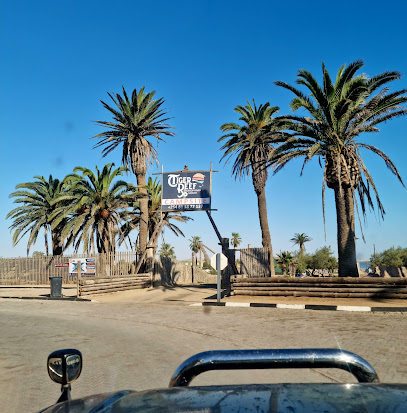
Platz Am Meer Waterfront
Discover the vibrant shopping experience at Platz Am Meer Waterfront, where local culture meets stunning ocean views in Swakopmund, Namibia.
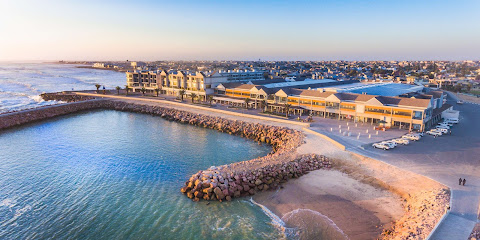
Swakopmund Brauhaus
Discover authentic German cuisine and craft beers at Swakopmund Brauhaus, a unique dining experience in the heart of Namibia's scenic coastal town.
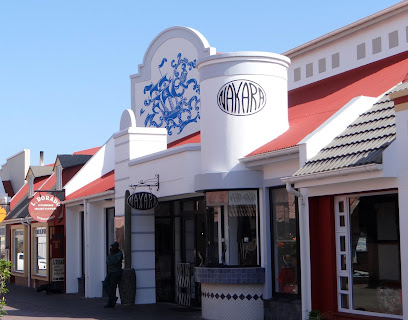
Altstadt Restaurant
Discover the culinary wonders of Swakopmund at Altstadt Restaurant, where German flavors meet Namibian hospitality in a vibrant setting.
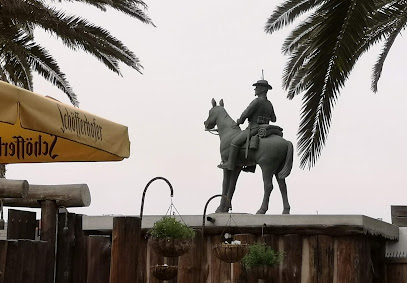
Jetty 1905 Restaurant
Experience exquisite seafood dining at Jetty 1905, a vibrant restaurant on Swakopmund's iconic Jetty Bridge, with stunning ocean views.
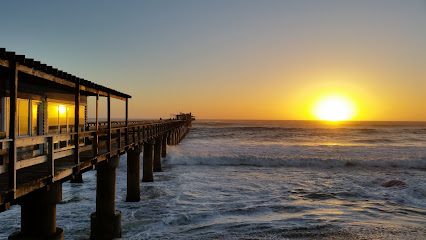
Alte Brücke Resort
Experience luxury and adventure at Alte Brücke Resort, your serene escape in Swakopmund, Namibia, surrounded by stunning landscapes and rich culture.

BlueGrass
Discover the culinary delights of BlueGrass in Swakopmund, where local flavors and international cuisine meet in a vibrant dining atmosphere.
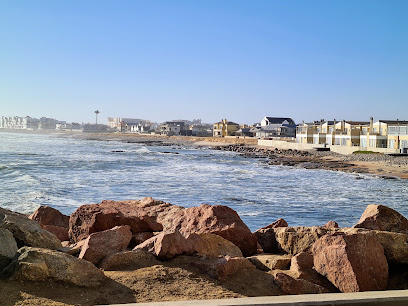
Swakopmund Museum
Explore the rich cultural and natural heritage of Namibia at the Swakopmund Museum, a must-visit destination for travelers in Swakopmund.
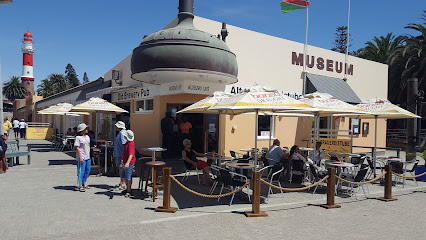
Tiger Reef Beach Bar & Grill
Experience the best of coastal dining at Tiger Reef Beach Bar & Grill, where local flavors meet stunning ocean views in Swakopmund, Namibia.
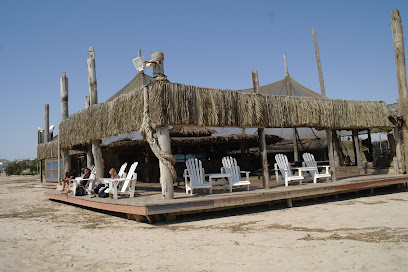
Kristall Galerie
Explore the breathtaking beauty of gemstones and minerals at Kristall Galerie, Swakopmund's premier museum and tourist attraction.
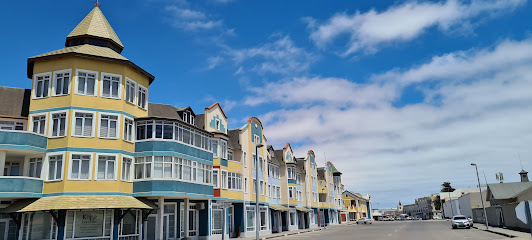
National Marine Aquarium
Explore the vibrant underwater world at the National Marine Aquarium in Swakopmund, a captivating experience for marine lovers and curious travelers.
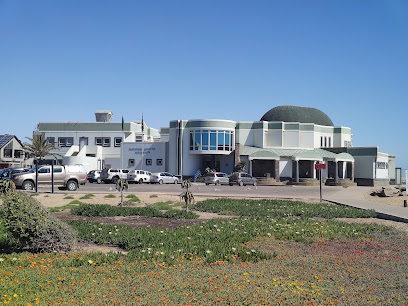
Kücki's Pub
Discover the vibrant flavors of Swakopmund at Küçki's Pub, where local cuisine meets a lively atmosphere in the heart of Namibia.
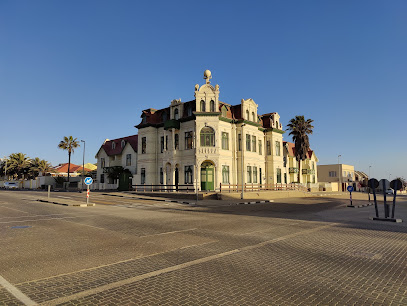
Two Beards Coffee Roastery
Experience exceptional coffee at Two Beards Coffee Roastery in Swakopmund, where craftsmanship meets sustainability in a cozy atmosphere.
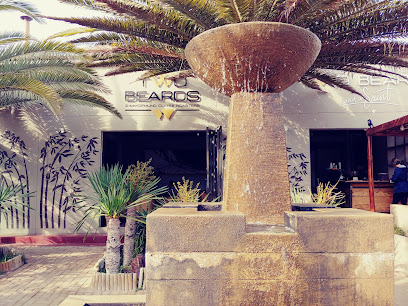
Ocean Basket Swakopmund
Discover the vibrant flavors of the ocean at Ocean Basket Swakopmund, where fresh seafood meets Mediterranean charm in a family-friendly atmosphere.
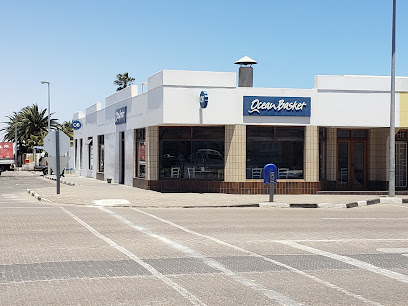
Swakopmund Mole
Visit Swakopmund Mole for stunning ocean views, vibrant local culture, and a perfect getaway on Namibia's beautiful coastline.
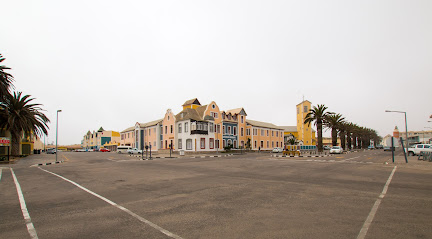
Unmissable attractions to see
Swakopmund Museum
Uncover the stories of Namibia's past at the Swakopmund Museum, a fascinating destination showcasing rich cultural heritage and natural history.
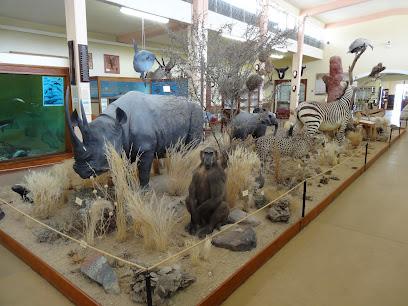
Kristall Galerie
Discover the mesmerizing beauty of crystals and gemstones at Kristall Galerie, an essential stop for tourists in Swakopmund.
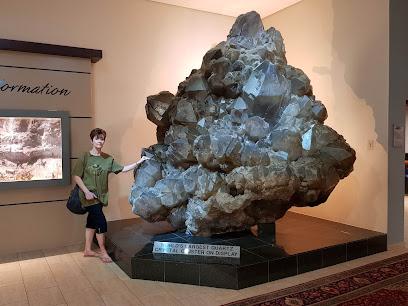
National Marine Aquarium
Explore the captivating marine life of Namibia at the National Marine Aquarium in Swakopmund, a family-friendly attraction for all ages.
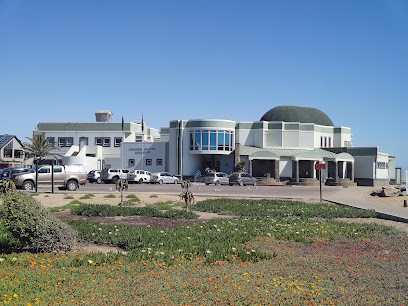
Dune 7
Explore the breathtaking heights and stunning vistas at Dune 7, a must-visit natural wonder in Walvis Bay, Namibia.
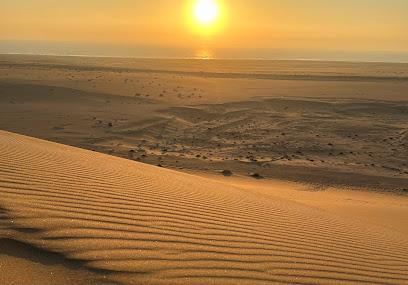
Snake Park
Explore Snake Park in Swakopmund, a unique attraction featuring a variety of reptiles and an educational experience for the whole family.
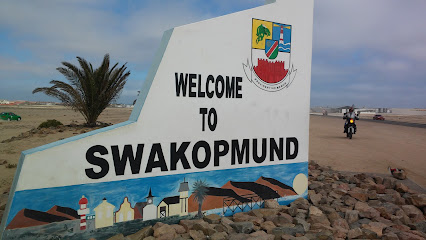
Die Muschel Book & Art Shop
Discover a unique blend of books, art, and cultural treasures at Die Muschel Book & Art Shop in Swakopmund, a must-visit for every traveler.
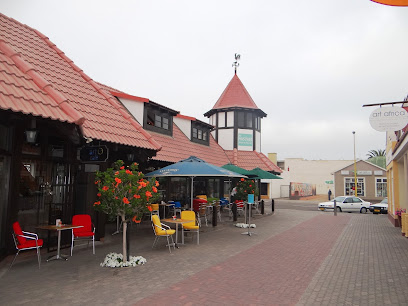
Tiger Reef Campsite
Experience the breathtaking beauty of Namibia at Tiger Reef Campsite, where adventure and tranquility meet along the stunning coastline.

Pelican Point Kayaking
Explore the breathtaking waters of Walvis Bay with Pelican Point Kayaking, where adventure meets stunning marine scenery and unforgettable wildlife encounters.
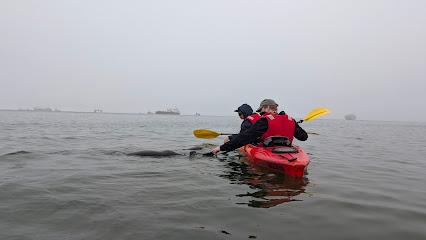
Tommy's Living Desert Tours
Discover the breathtaking Namib Desert with Tommy's Living Desert Tours—an unforgettable journey into nature's wonders.
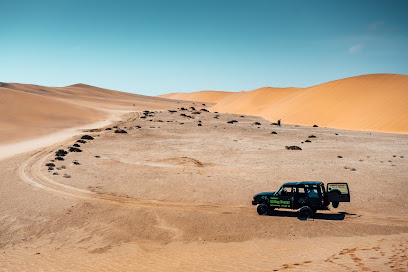
Swakopmund Fat Bike Tours
Experience the thrill of biking through stunning Namibian landscapes with Swakopmund Fat Bike Tours, an outdoor adventure like no other.

Swakopmund Paintball Centre & Adventure Park
Experience the ultimate thrill at Swakopmund Paintball Centre & Adventure Park, where adventure meets fun in the heart of Namibia's coastal charm.
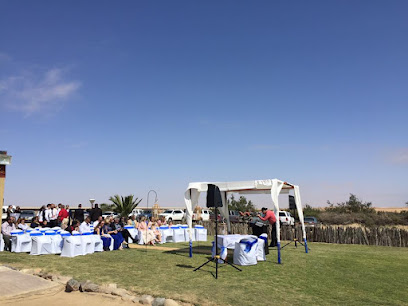
Bush Bird Aviation - SOSSUSFLY
Explore the breathtaking landscapes of Namibia from above with Bush Bird Aviation - SOSSUSFLY, a premier air taxi and scenic flight experience.

Red Dune Safaris Namibia
Explore the stunning red dunes of Namibia with Red Dune Safaris, an exhilarating tour operator in Walvis Bay offering unforgettable desert adventures.
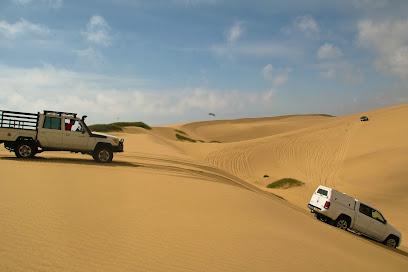
Eco-Gliding Tours
Discover the breathtaking beauty of Namibia from above with Eco-Gliding Tours, where adventure meets sustainable tourism in Swakopmund.
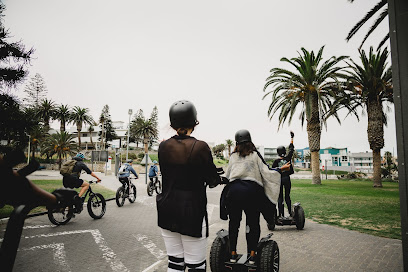
Jetty Pier - End of Pier
Experience the stunning views and vibrant atmosphere of Jetty Pier, a top tourist attraction in Swakopmund, Namibia.
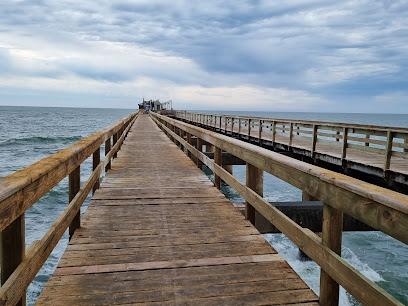
Essential places to dine
The Tug Restaurant
Experience exquisite seafood dining aboard an iconic tugboat with stunning ocean views in Swakopmund.
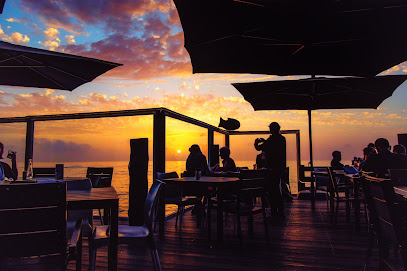
Swakopmund Brauhaus
Experience authentic German cuisine at Swakopmund Brauhaus in Namibia – where tradition meets flavor in a cozy setting.
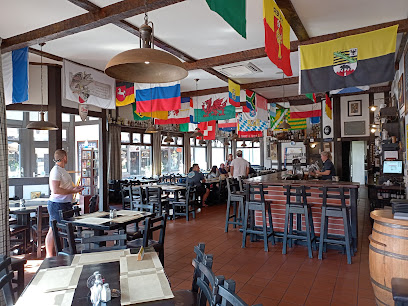
Altstadt Restaurant
Savor authentic German and seafood dishes in the heart of Swakopmund at Altstadt Restaurant – perfect for families and food lovers alike.

Jetty 1905 Restaurant
Experience unparalleled seafood dining at Jetty 1905 Restaurant with stunning ocean views in Swakopmund.
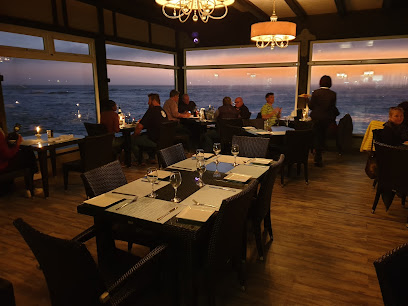
Fork 'n Nice
Experience exceptional dining at Fork 'n Nice in Swakopmund—where local flavors meet culinary creativity.
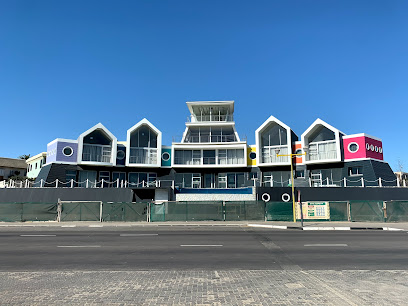
BlueGrass
Experience vibrant dining at BlueGrass in Swakopmund - where local flavors meet international cuisine.
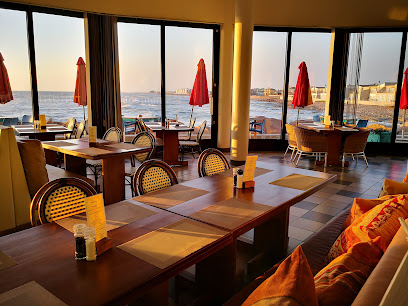
Tiger Reef Beach Bar & Grill
Discover culinary bliss at Tiger Reef Beach Bar & Grill in Swakopmund – where fresh flavors meet stunning ocean views.
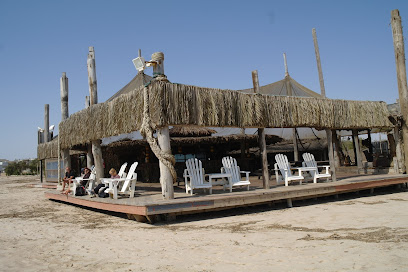
Desert Creek Spur
Discover the vibrant flavors of Africa at Desert Creek Spur - where family dining meets exceptional steaks and barbecues.
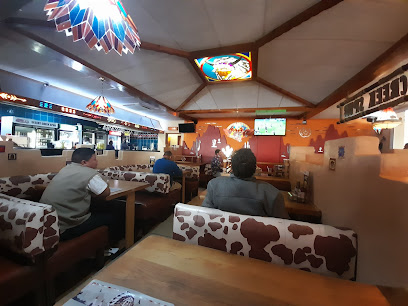
Kücki's Pub
Discover the lively ambiance and diverse menu at Kücki's Pub in Swakopmund - where local flavors meet international cuisine.
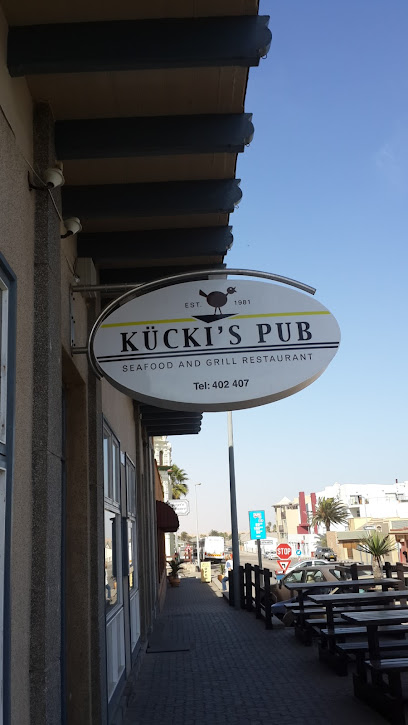
Gabriele's Italian Pizzeria
Discover authentic Italian flavors at Gabriele's Italian Pizzeria in Swakopmund - where every bite feels like a trip to Italy.
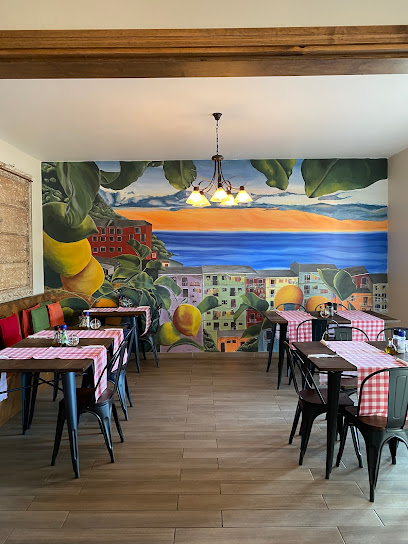
Ocean Cellar
Experience exquisite seafood dining at Ocean Cellar by the waterfront in Swakopmund - where every meal is paired with stunning ocean views.
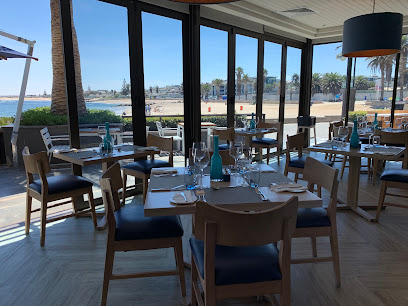
The Fish Deli
Experience the best seafood in Swakopmund at The Fish Deli – where freshness meets flavor in every bite.
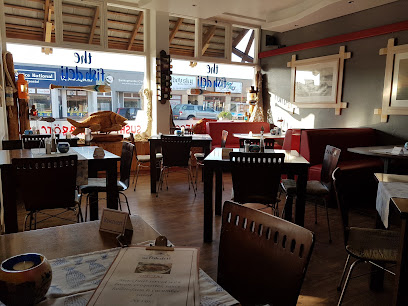
Ocean Basket Swakopmund
Experience the best seafood in Swakopmund at Ocean Basket - where fresh Mediterranean flavors meet family-friendly dining.
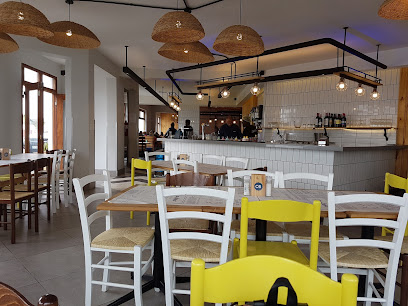
Farmhouse Deli
Experience culinary bliss at Farmhouse Deli on Swakopmund's Mole with fresh local flavors and stunning ocean views.
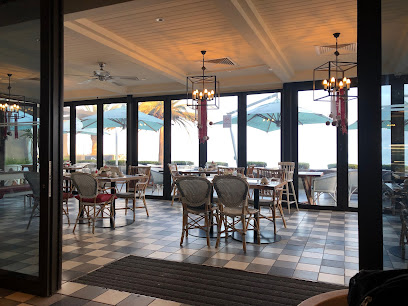
Lighthouse Restaurant Swakopmund
Experience family-friendly dining at Lighthouse Restaurant in Swakopmund with fresh seafood and stunning ocean views.
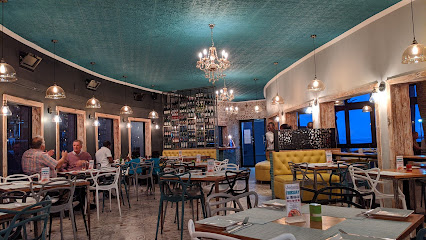
Markets, malls and hidden boutiques
Platz Am Meer Waterfront
Explore the vibrant Platz Am Meer Waterfront, a shopping oasis in Swakopmund, offering unique shops, delicious eats, and breathtaking ocean views.
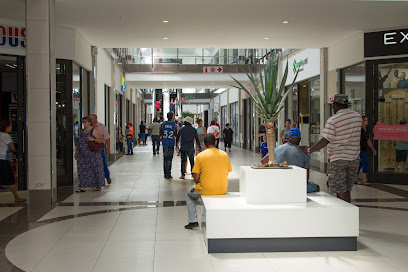
Die Muschel Book & Art Shop
Explore Die Muschel Book & Art Shop in Swakopmund for a unique blend of literature and local art, perfect for every traveler.
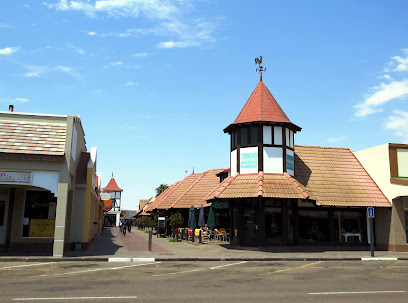
Cosdef Arts & Craft Centre
Explore Namibian culture through unique handcrafted souvenirs and support local artisans at Swakopmund's Cosdef Arts & Craft Centre.
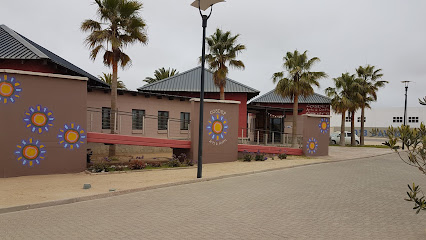
The Crazy Store Swakopmund Vineta Shopping Centre
Discover a treasure trove of unique gifts, toys, and home goods at The Crazy Store in Swakopmund, where fun meets affordability.
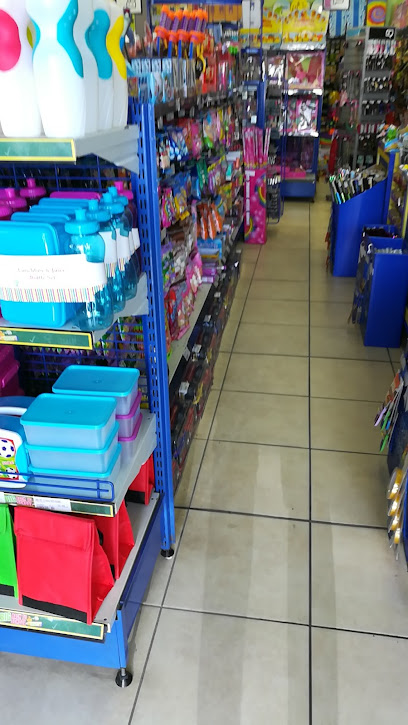
Mr Price / MRP
Discover trendy and affordable fashion at Mr Price in Swakopmund's Woermann Brock Mall, perfect for every traveler seeking style.
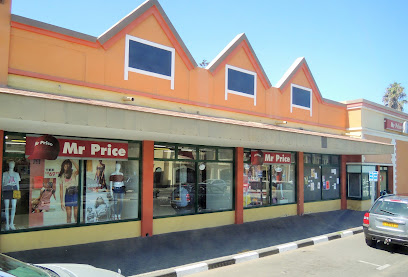
Rogl Souvenirs & Gallery
Discover unique art and souvenirs at Rogl Souvenirs & Gallery in Swakopmund, where creativity meets Namibian culture.
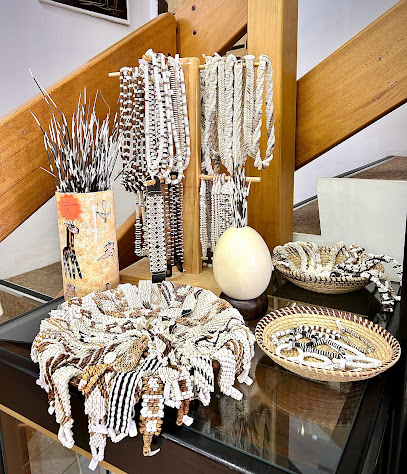
Peter's Antiques
Explore a captivating collection of antiques and local artifacts at Peter's Antiques in Swakopmund, a true gem for cultural enthusiasts and collectors alike.
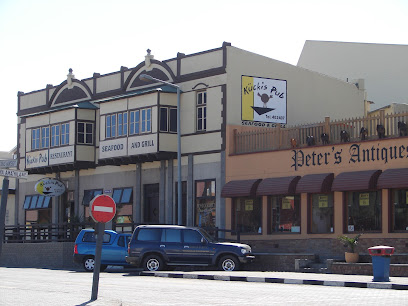
Edgars NAM Swakopmund
Discover fashion at Edgars NAM Swakopmund - your ultimate clothing destination in Namibia's coastal paradise.
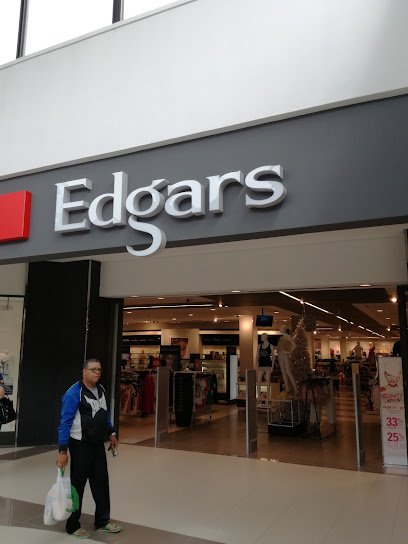
Big Daddy
Discover Big Daddy in Swakopmund, where fashion meets affordability for all your shopping needs.
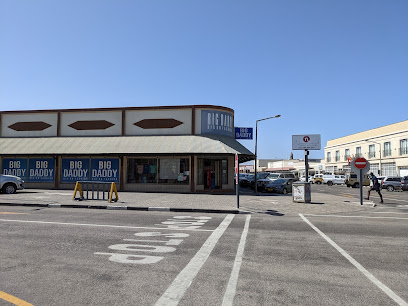
Trendhaus
Explore Trendhaus: Swakopmund's premier destination for unique artistic handicrafts and cultural treasures.
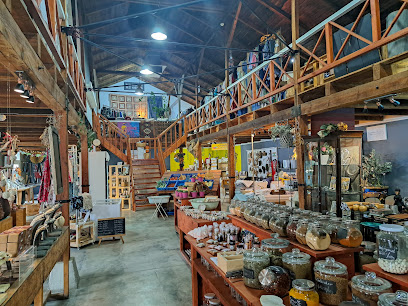
The Crazy Store Swakopmund Platz am Meer Waterfront
Explore an eclectic range of gifts, toys, and home goods at The Crazy Store in Swakopmund, perfect for souvenirs and unique finds.

Art Stop Swakopmund
Discover your creative side at Art Stop Swakopmund, the premier destination for high-quality art supplies in Namibia's coastal gem.
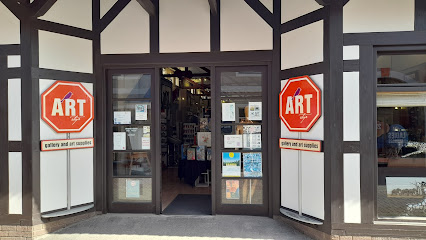
Kavita Craft Market Swakopmund
Experience the colorful and artistic spirit of Namibia at Kavita Craft Market in Swakopmund, a vibrant destination for unique handcrafted treasures.

Plain & Purl Swakopmund
Explore Plain & Purl Swakopmund, a charming wool store offering high-quality yarns and a cozy crafting community in the heart of Namibia.
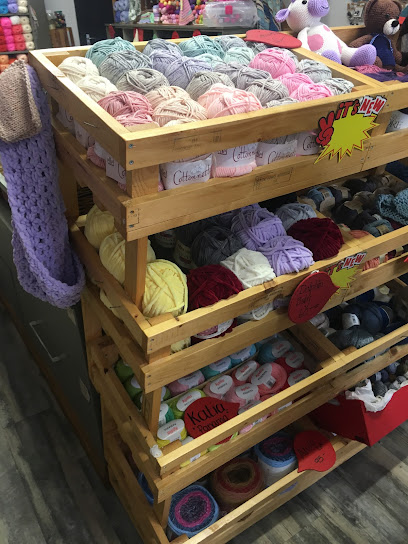
The Red Shelf Thrift & Consignment- Swakopmund
Explore unique clothing and literary treasures at The Red Shelf Thrift & Consignment in Swakopmund, a must-visit for eco-conscious travelers.
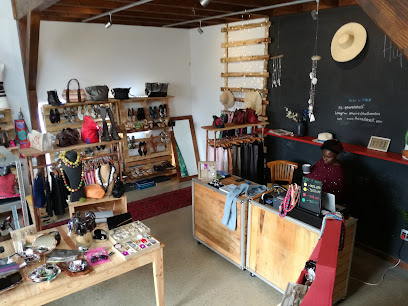
Essential bars & hidden hideouts
Altstadt Restaurant
Experience the best of German cuisine and seafood in the heart of Swakopmund at Altstadt Restaurant, a vibrant spot for food lovers.
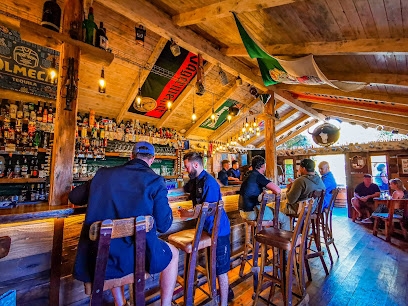
Brewer & Butcher
Discover the vibrant atmosphere and delicious cuisine at Brewer & Butcher, Swakopmund's top pub for craft beers and local flavors.
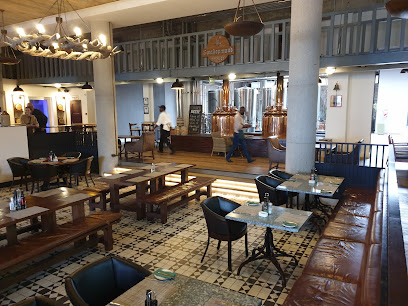
Tiger Reef Beach Bar & Grill
Savor the coastal flavors at Tiger Reef Beach Bar & Grill, where stunning ocean views meet a delectable menu in Swakopmund.
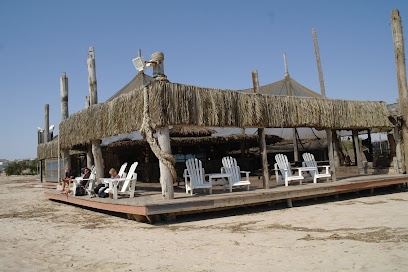
Kücki's Pub
Discover the vibrant essence of Swakopmund at Kücki's Pub, where local flavors meet a lively atmosphere for an unforgettable dining experience.
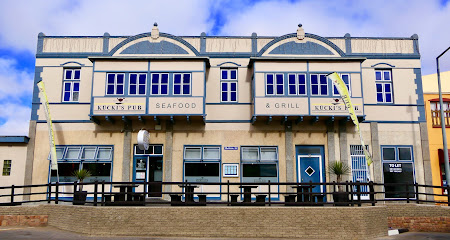
Desert Tavern
Experience the vibrant nightlife at Desert Tavern, a local bar in Swakopmund, Namibia, offering a wide range of drinks and a lively atmosphere.
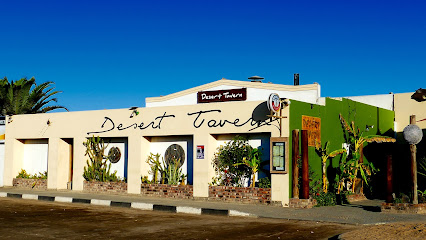
Old Sailor Swakopmund
Experience the best of coastal dining at Old Sailor Swakopmund, where local flavors meet international cuisine in a charming nautical setting.
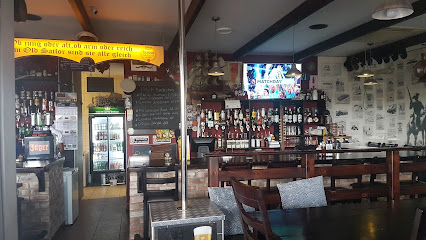
Bar Zonder Naam
Discover Bar Zonder Naam in Swakopmund, where exquisite wines meet a cozy atmosphere for a perfect evening out.
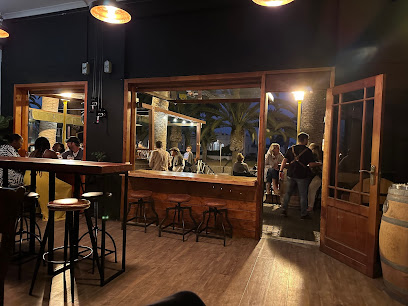
Ankerplatz Restaurant and wine bar
Discover the flavors of Namibia at Ankerplatz Restaurant and Wine Bar in Swakopmund, where family-friendly dining meets exquisite local cuisine.
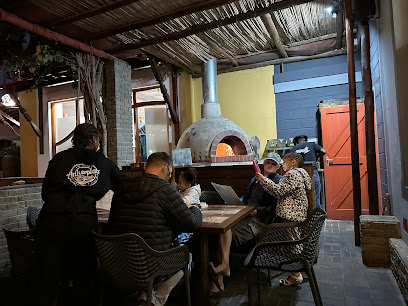
Soundgarden Swakopmund
Experience the vibrant atmosphere and diverse drink menu at Soundgarden Swakopmund, a must-visit bar for tourists in Namibia.
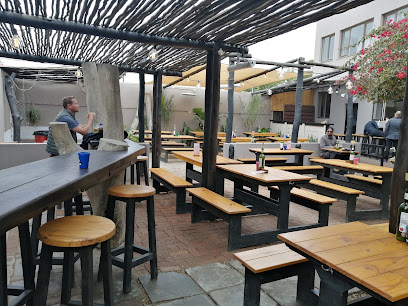
Makiti Center, Swakopmund, Namibia
Experience the vibrant nightlife at Makiti Center, a top bar in Swakopmund offering a delightful drink selection and lively ambiance.
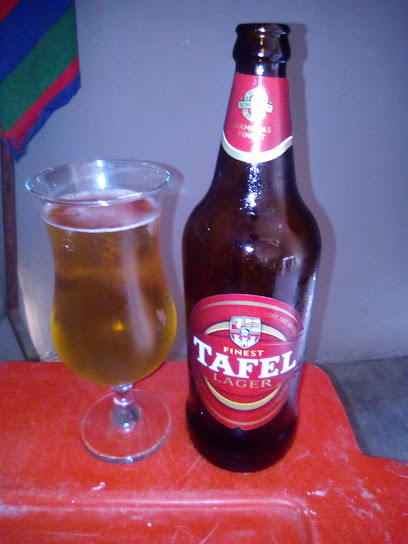
Vintage Bar & Grill Swakopmund
Experience the vibrant nightlife of Swakopmund at Vintage Bar & Grill, where delicious food meets expertly crafted cocktails in a charming atmosphere.
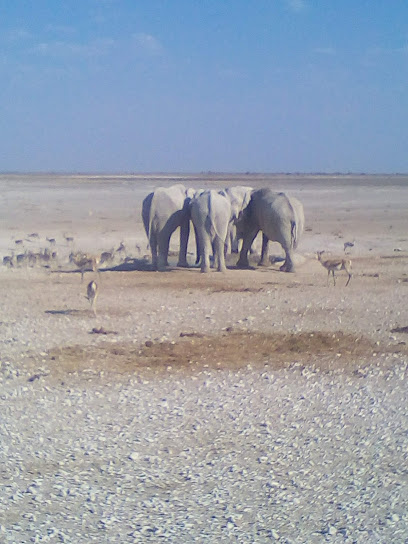
Beer garden
Experience local culture and refreshing brews at Swakopmund's vibrant Beer Garden, a perfect spot for relaxation and socializing.
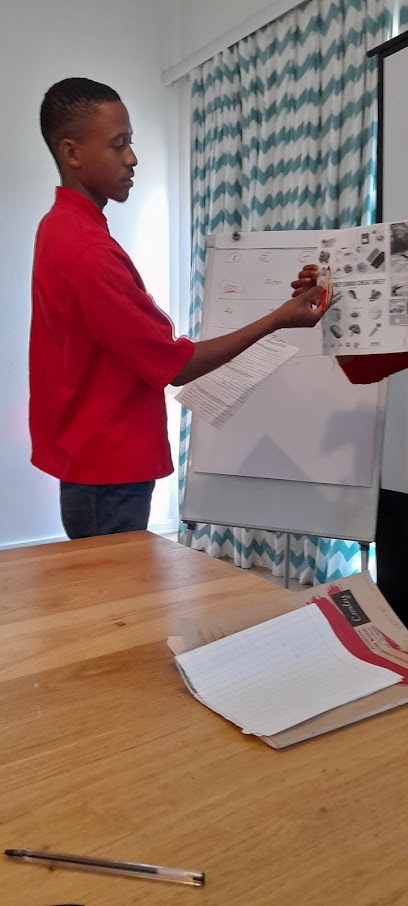
The Generals Club Swakopmund
Immerse yourself in Swakopmund's nightlife at The Generals Club, where great drinks, music, and fun come together for an unforgettable experience.
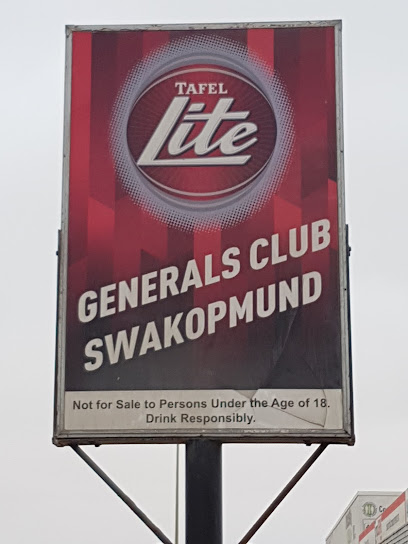
Champion spot bar
Experience the vibrant nightlife at Champion Spot Bar in Swakopmund, where refreshing drinks and a lively atmosphere await every visitor.
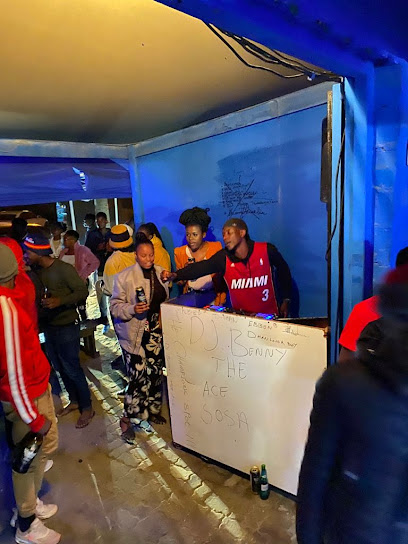
Pitstop Sports Lounge
Discover the ultimate sports bar experience at Pitstop Sports Lounge in Swakopmund, where excitement meets delicious cuisine and refreshing drinks.

Local Phrases
-
- HelloHallo
[ha-lo] - GoodbyeTschüss
[chüs] - YesJa
[ya] - NoNein
[nine] - Please/You're welcomeBitte
[bi-te] - Thank youDanke
[dahn-ke] - Excuse me/SorryEntschuldigung
[ent-shool-di-gung] - How are you?Wie geht es dir?
[vee gaat es deer] - Fine. And you?Gut. Und dir?
[goot oont deer] - Do you speak English?Sprichst du Englisch?
[shprikhst doo eng-lish] - I don't understandIch verstehe nicht
[ikh fer-shtay-eh nikht]
- HelloHallo
-
- I'd like to see the menu, pleaseIch möchte bitte die Speisekarte sehen
[ikh mehrkhte bi-te dee shp-ai-ze-kahr-teh zeh-en] - I don't eat meatIch esse kein Fleisch
[ikh es-se kine fli-sh] - Cheers!Prost!
[prohst] - I would like to pay, pleaseIch möchte bitte zahlen
[ikh mehrkhte bi-te tsah-len]
- I'd like to see the menu, pleaseIch möchte bitte die Speisekarte sehen
-
- Help!Hilfe!
[hil-feh] - Go away!Geh weg!
[geh vehg] - Call the Police!Rufen Sie die Polizei!
[roo-fen zee dee poh-lee-tsey] - Call a doctor!Rufen Sie einen Arzt!
[roo-fen zee i-nen ahrts] - I'm lostIch habe mich verloren
[ikh hah-beh mikh fer-loh-ren] - I'm illIch bin krank
[ikh bin krank]
- Help!Hilfe!
-
- I'd like to buy...Ich möchte ... kaufen
[ikh mehrkhte ... kow-fen] - I'm just lookingIch schaue nur
[ikh sh-ow-eh noor] - How much is it?Wie viel kostet es?
[vee feel kohs-tet es] - That's too expensiveDas ist zu teuer
[dahs ist tsoy toy-er] - Can you lower the price?Können Sie den Preis senken?
[kew-nen zee den prees zehn-ken]
- I'd like to buy...Ich möchte ... kaufen
-
- What time is it?Wie spät ist es?
[vee shpeht ist es] - It's one o'clockEs ist ein Uhr
[es ist iyn oor] - Half past (10)Halb elf
[halb elf] - MorningMorgen
[mohr-gn] - AfternoonNachmittag
[nahkh-mit-tahg] - EveningAbend
[ah-bnt] - YesterdayGestern
[gehs-tern] - TodayHeute
[hoi-teh] - TomorrowMorgen
[mohr-gn] - 1eins
[ayns] - 2zwei
[tsvai] - 3drei
[dry] - 4vier
[feer] - 5fünf
[foonf] - 6sechs
[zeks] - 7sieben
[zee-ben] - 8acht
[akht] - 9neun
[noyn] - 10zehn
[tsen]
- What time is it?Wie spät ist es?
-
- Where's a/the...?Wo ist ein/der...?
[vo ist iyn/dehr] - What's the address?Was ist die Adresse?
[vahs ist dee ah-dreh-seh] - Can you show me (on the map)?Können Sie mir das zeigen (auf der Karte)?
[kew-nen zee meer dahs tsee-gen (owf dehr kahr-teh)] - When's the next (bus)?Wann kommt der nächste (Bus)?
[vahn kohmt dehr nekhs-teh (boos)] - A ticket (to ....)Eine Fahrkarte (nach ...)
[i-ne fahr-kahr-teh (nakh ...)]
- Where's a/the...?Wo ist ein/der...?
History of Swakopmund
-
Swakopmund was founded in 1892 by Captain Curt von François as the main harbour for German South West Africa. Its establishment was driven by the need for a port that could serve as a gateway for German colonial ambitions in the region.
-
Swakopmund is renowned for its well-preserved German colonial architecture. Buildings such as the Woermannhaus, built in 1905, and the Hohenzollern Building, completed in 1906, reflect the town's German heritage. The distinctive architecture gives Swakopmund a unique charm, blending European styles with the African landscape.
-
The Swakopmund Jetty was first constructed in 1905 to facilitate the offloading of goods from ships. Originally made of wood, it was later replaced with a steel structure in 1912. The jetty has undergone several restorations and remains a popular spot for both locals and tourists.
-
During World War I, Swakopmund played a strategic role for German forces in South West Africa. The town was occupied by South African troops in 1915, following the surrender of the German forces in the region. The war marked the end of German colonial rule in Namibia.
-
After Namibia gained independence from South Africa in 1990, Swakopmund experienced significant growth. The town has developed into a vibrant tourist destination known for its adventure sports, cultural heritage, and scenic landscapes.
-
Swakopmund hosts several cultural festivals that celebrate its diverse heritage. The annual Swakopmund Carnival (Küska) is a highlight, featuring parades, music, and traditional German festivities. These events highlight the town's blend of German and Namibian cultures.
Swakopmund Essentials
-
Swakopmund is located on the coast of Namibia, approximately 360 kilometers west of Windhoek, the capital city. The nearest airport is Walvis Bay Airport (WVB), about 40 kilometers south of Swakopmund. From the airport, you can take a shuttle service, taxi, or rent a car to reach Swakopmund. Alternatively, you can drive from Windhoek, which takes around 4 to 5 hours via the B2 national road. Bus services also operate between Windhoek and Swakopmund, offering a budget-friendly option for travelers.
-
Swakopmund is a compact town, and many attractions are within walking distance. For longer distances, taxis are readily available and affordable. Car rentals are also a popular option for those wishing to explore the surrounding areas, such as the Namib Desert or nearby coastal towns. There are no public buses within Swakopmund, but shuttle services can provide transport to and from Walvis Bay and other nearby destinations.
-
The official currency in Namibia is the Namibian Dollar (NAD), which is pegged to the South African Rand (ZAR). Both currencies are accepted interchangeably. Credit and debit cards are widely accepted in hotels, restaurants, and larger shops. However, it is advisable to carry some cash for smaller establishments and markets. ATMs are available throughout Swakopmund for cash withdrawals.
-
Swakopmund is generally a safe destination for tourists. However, standard precautions should be taken. Avoid walking alone at night, especially in poorly lit areas. The neighborhoods around Mondesa and DRC (Democratic Resettlement Community) have higher crime rates, and it is recommended to visit these areas with a local guide if needed. Keep an eye on your belongings in crowded places and avoid displaying valuables.
-
In case of emergency, dial 10111 for police assistance, and 10177 for medical emergencies. The Swakopmund State Hospital and several private clinics provide medical services. It is advisable to have travel insurance that covers medical emergencies. Pharmacies are available for over-the-counter medications. For any consular assistance, contact your respective embassy in Windhoek.
-
Fashion: Do dress comfortably and casually, but avoid overly revealing clothing, especially in conservative areas. Religion: Do respect local customs and traditions, particularly in religious sites. Public Transport: Do use registered taxis and agree on a fare before starting your journey. Don’t hitchhike or use unregistered transport. Greetings: Do greet people with a handshake and a friendly 'hello.' Eating & Drinking: Do try local delicacies like biltong and kapana. Don’t refuse food or drink offers from locals, as it can be considered impolite.
-
To experience Swakopmund like a local, visit the local markets such as the Swakopmund Open Market where you can buy fresh produce and local crafts. Try local eateries for traditional Namibian dishes. Engage with the friendly locals who are often eager to share stories about their town. Don't miss the chance to join in on local festivals and events, such as the Swakopmund Carnival (Küska). For a unique experience, take a quad biking tour in the nearby dunes or a scenic flight over the Skeleton Coast.
Trending Landmark in Swakopmund
-
The Tug Restaurant
-
Platz Am Meer Waterfront
-
Swakopmund Brauhaus
-
Altstadt Restaurant
-
Jetty 1905 Restaurant
-
Alte Brücke Resort
-
BlueGrass
-
Swakopmund Museum
-
Tiger Reef Beach Bar & Grill
-
Kristall Galerie
-
National Marine Aquarium
-
Kücki's Pub
-
Two Beards Coffee Roastery
-
Ocean Basket Swakopmund
-
Swakopmund Mole
Nearby Cities to Swakopmund
-
Things To Do in Walvis Bay
-
Things To Do in Usakos
-
Things To Do in Karibib
-
Things To Do in Omaruru
-
Things To Do in Okahandja
-
Things To Do in Windhoek
-
Things To Do in Otjiwarongo
-
Things To Do in Outjo
-
Things To Do in Etosha Village
-
Things To Do in Mariental
-
Things To Do in Lüderitz
-
Things To Do in Tsumeb
-
Things To Do in Oshakati
-
Things To Do in Ongwediva
-
Things To Do in Keetmanshoop













